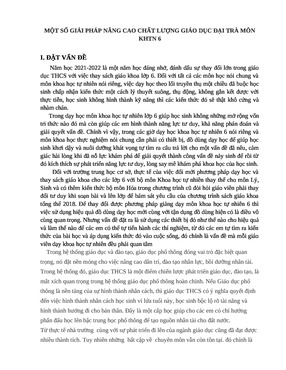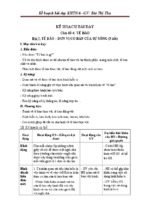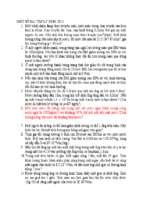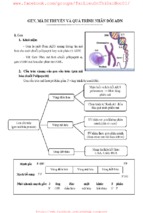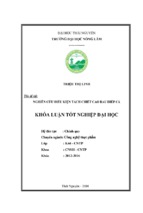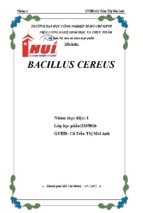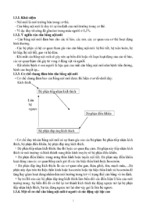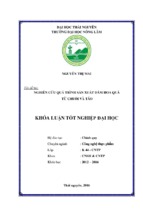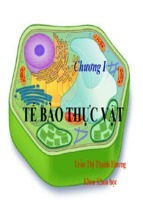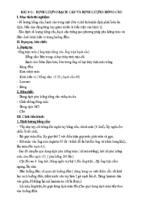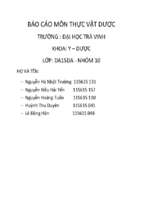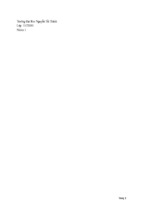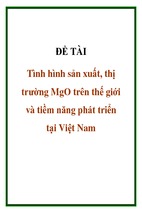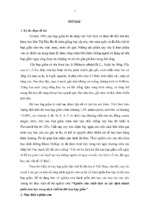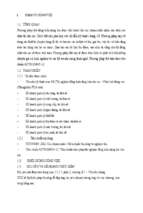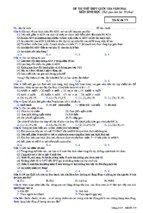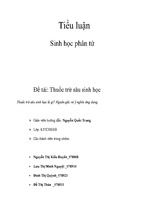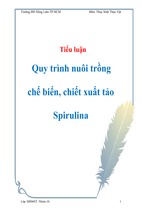Essentials
OF
Radiation Biology
AND
Protection
SECOND EDITION
STEVE FORSHIER
Australia • Brazil • Japan • Korea • Mexico • Singapore • Spain • United Kingdom • United States
Copyright 2011 Cengage Learning. All Rights Reserved. May not be copied, scanned, or duplicated, in whole or in part. Due to electronic rights, some third party content may be suppressed from the eBook and/or eChapter(s).
Editorial review has deemed that any suppressed content does not materially affect the overall learning experience. Cengage Learning reserves the right to remove additional content at any time if subsequent rights restrictions require it.
This is an electronic version of the print textbook. Due to electronic rights restrictions,
some third party content may be suppressed. Editorial review has deemed that any suppressed
content does not materially affect the overall learning experience. The publisher reserves the right
to remove content from this title at any time if subsequent rights restrictions require it. For
valuable information on pricing, previous editions, changes to current editions, and alternate
formats, please visit www.cengage.com/highered to search by ISBN#, author, title, or keyword for
materials in your areas of interest.
Copyright 2011 Cengage Learning. All Rights Reserved. May not be copied, scanned, or duplicated, in whole or in part. Due to electronic rights, some third party content may be suppressed from the eBook and/or eChapter(s).
Editorial review has deemed that any suppressed content does not materially affect the overall learning experience. Cengage Learning reserves the right to remove additional content at any time if subsequent rights restrictions require it.
Essentials of Radiation Biology and
Protection, Second Edition
Steve Forshier
Vice President, Career and Professional
Editorial: Dave Garza
Director of Learning Solutions: Matthew Kane
Senior Acquisitions Editor: Sherry Dickinson
© 2009, 2002 Delmar, Cengage Learning
ALL RIGHTS RESERVED. No part of this work covered by the copyright herein
may be reproduced, transmitted, stored or used in any form or by any means
graphic, electronic, or mechanical, including but not limited to photocopying,
recording, scanning, digitizing, taping, Web distribution, information networks,
or information storage and retrieval systems, except as permitted under
Section 107 or 108 of the 1976 United States Copyright Act, without the prior
written permission of the publisher.
Managing Editor: Marah Bellegarde
Product Manager: Natalie Pashoukos
Editorial Assistant: Jennifer Waters
Vice President, Career and Professional
Marketing: Jennifer McAvey
Marketing Director: Wendy Mapstone
For product information and technology assistance, contact us at
Cengage Learning Customer & Sales Support, 1-800-354-9706
For permission to use material from this text or product,
submit all requests online at www.cengage.com/permissions
Further permissions questions can be emailed to
[email protected]
Marketing Manager: Michelle McTighe
Marketing Coordinator: Chelsey Iaquinta
Library of Congress Control Number: 2008925672
Production Director: Carolyn Miller
ISBN-13: 978-1-4283-1217-3
Production Manager: Andrew Crouth
ISBN-10: 1-4283-1217-X
Content Project Manager: Anne Sherman
Senior Art Director: Jack Pendleton
Technology Project Manager: Christopher
Catalina
Production Technology Analyst: Thomas Stover
Delmar
Executive Woods
5 Maxwell Drive
Clifton Park, NY 12065
USA
Cengage Learning is a leading provider of customized learning solutions with
office locations around the globe, including Singapore, the United Kingdom,
Australia, Mexico, Brazil, and Japan. Locate your local office at
www.cengage.com/global
Cengage Learning products are represented in Canada by Nelson Education, Ltd.
To learn more about Delmar, visit www.cengage.com/delmar
Purchase any of our products at your local bookstore or at our preferred online
Proudly sourced and uploaded by [StormRG]
store www.cengagebrain.com
Kickass Torrents | TPB | ET | h33t
Notice to the Reader
Publisher does not warrant or guarantee any of the products described herein or perform any independent
analysis in connection with any of the product information contained herein. Publisher does not assume,
and expressly disclaims, any obligation to obtain and include information other than that provided to it by
the manufacturer. The reader is expressly warned to consider and adopt all safety precautions that might be
indicated by the activities described herein and to avoid all potential hazards. By following the instructions
contained herein, the reader willingly assumes all risks in connection with such instructions. The publisher
makes no representations or warranties of any kind, including but not limited to, the warranties of fitness for
particular purpose or merchantability, nor are any such representations implied with respect to the material set
forth herein, and the publisher takes no responsibility with respect to such material. The publisher shall not be
liable for any special, consequential, or exemplary damages resulting, in whole or part, from the readers’ use of,
or reliance upon, this material.
Printed in the United States of America
2 3 4 5 6 7 15 14 13 12 11
Copyright 2011 Cengage Learning. All Rights Reserved. May not be copied, scanned, or duplicated, in whole or in part. Due to electronic rights, some third party content may be suppressed from the eBook and/or eChapter(s).
Editorial review has deemed that any suppressed content does not materially affect the overall learning experience. Cengage Learning reserves the right to remove additional content at any time if subsequent rights restrictions require it.
Contents
Preface . . . . . . . . . . . . . . . . . . . . . . . . . . . . . . . . . . . . . . . . . . . . . . . . . . . . . . . . . vii
SECTION 1 : Theory and Concepts
1
CHAPTER 1 Radiobiology History . . . . . . . . . . . . . . . . . . . . . . . . . . . . . . . . . . . . . . . . . . . . . .3
Radiobiology History . . . . . . . . . . . . . . . . . . . . . . . . . . . . . . . . . . . . . . . . . . . 4
Law of Bergonie and Tribondeau . . . . . . . . . . . . . . . . . . . . . . . . . . . . . . . . 8
Ancel and Vitemberger . . . . . . . . . . . . . . . . . . . . . . . . . . . . . . . . . . . . . . . 8
Fractionation Theory. . . . . . . . . . . . . . . . . . . . . . . . . . . . . . . . . . . . . . . . . 9
Repopulation and Protraction . . . . . . . . . . . . . . . . . . . . . . . . . . . . . . . . . . 9
Mutagenesis . . . . . . . . . . . . . . . . . . . . . . . . . . . . . . . . . . . . . . . . . . . . . . 10
Effects of Oxygen and Hydrolysis of Water . . . . . . . . . . . . . . . . . . . . . . . . 10
Reproductive Failure . . . . . . . . . . . . . . . . . . . . . . . . . . . . . . . . . . . . . . . . 10
Roentgen. . . . . . . . . . . . . . . . . . . . . . . . . . . . . . . . . . . . . . . . . . . . . . . . . 10
Rad . . . . . . . . . . . . . . . . . . . . . . . . . . . . . . . . . . . . . . . . . . . . . . . . . . . . . 11
Rem . . . . . . . . . . . . . . . . . . . . . . . . . . . . . . . . . . . . . . . . . . . . . . . . . . . . 11
SI Units . . . . . . . . . . . . . . . . . . . . . . . . . . . . . . . . . . . . . . . . . . . . . . . . . 11
Regulation . . . . . . . . . . . . . . . . . . . . . . . . . . . . . . . . . . . . . . . . . . . . . . . . . . 12
CHAPTER 2 Cellular Anatomy and Physiology . . . . . . . . . . . . . . . . . . . . . . . . . . . . . . . . . . .17
Cell Biology. . . . . . . . . . . . . . . . . . . . . . . . . . . . . . . . . . . . . . . . . . . . . . . . .
Chemical Configuration of Cells . . . . . . . . . . . . . . . . . . . . . . . . . . . . . . .
Cell Structure . . . . . . . . . . . . . . . . . . . . . . . . . . . . . . . . . . . . . . . . . . . . .
Cell Growth and Division . . . . . . . . . . . . . . . . . . . . . . . . . . . . . . . . . . . . . .
Mitosis . . . . . . . . . . . . . . . . . . . . . . . . . . . . . . . . . . . . . . . . . . . . . . . . . .
Meiosis . . . . . . . . . . . . . . . . . . . . . . . . . . . . . . . . . . . . . . . . . . . . . . . . . .
DNA Proofreading and Repair . . . . . . . . . . . . . . . . . . . . . . . . . . . . . . . .
18
19
22
30
31
32
34
CHAPTER 3 Cellular Effects of Radiation . . . . . . . . . . . . . . . . . . . . . . . . . . . . . . . . . . . . . . .43
Radiosensitivity of Cells . . . . . . . . . . . . . . . . . . . . . . . . . . . . . . . . . . . . . . . .
Physical and Biologic Factors . . . . . . . . . . . . . . . . . . . . . . . . . . . . . . . . .
Direct and Indirect Effects of Radiation. . . . . . . . . . . . . . . . . . . . . . . . . .
Interactions with Radiation . . . . . . . . . . . . . . . . . . . . . . . . . . . . . . . . . . . . .
Radiolysis of Water . . . . . . . . . . . . . . . . . . . . . . . . . . . . . . . . . . . . . . . . .
Irradiation of Macromolecules. . . . . . . . . . . . . . . . . . . . . . . . . . . . . . . . .
Single-Hit Chromosome Aberrations . . . . . . . . . . . . . . . . . . . . . . . . . . . .
Multi-Hit Chromosome Aberrations . . . . . . . . . . . . . . . . . . . . . . . . . . . .
Reciprocal Translocations . . . . . . . . . . . . . . . . . . . . . . . . . . . . . . . . . . . .
Dose-Response Relationships . . . . . . . . . . . . . . . . . . . . . . . . . . . . . . . . . . .
Linear-Dose-Response Relationships . . . . . . . . . . . . . . . . . . . . . . . . . . . .
Linear Quadratic Dose-Response Curves . . . . . . . . . . . . . . . . . . . . . . . .
Target Theory . . . . . . . . . . . . . . . . . . . . . . . . . . . . . . . . . . . . . . . . . . . . . . .
Bystander Effect . . . . . . . . . . . . . . . . . . . . . . . . . . . . . . . . . . . . . . . . . . .
Cell Survival Curves . . . . . . . . . . . . . . . . . . . . . . . . . . . . . . . . . . . . . . . . . .
Section 1 Review . . . . . . . . . . . . . . . . . . . . . . . . . . . . . . . . . . . . . . . . . . . . .
44
45
48
49
49
50
52
54
55
55
56
56
58
59
60
67
iii
Copyright 2011 Cengage Learning. All Rights Reserved. May not be copied, scanned, or duplicated, in whole or in part. Due to electronic rights, some third party content may be suppressed from the eBook and/or eChapter(s).
Editorial review has deemed that any suppressed content does not materially affect the overall learning experience. Cengage Learning reserves the right to remove additional content at any time if subsequent rights restrictions require it.
iv
CONTENTS
SECTION 2 : Biological Effects of Radiation Exposure
71
CHAPTER 4 Effects of Initial Exposure to Radiation . . . . . . . . . . . . . . . . . . . . . . . . . . . . . . .73
Acute Radiation Syndromes. . . . . . . . . . . . . . . . . . . . . . . . . . . . . . . . . . . . .
Response Stages . . . . . . . . . . . . . . . . . . . . . . . . . . . . . . . . . . . . . . . . . . .
Bone Marrow Syndrome . . . . . . . . . . . . . . . . . . . . . . . . . . . . . . . . . . . . .
Gastrointestinal Syndrome . . . . . . . . . . . . . . . . . . . . . . . . . . . . . . . . . . .
Central Nervous System Syndrome . . . . . . . . . . . . . . . . . . . . . . . . . . . . .
Local Tissue Damage . . . . . . . . . . . . . . . . . . . . . . . . . . . . . . . . . . . . . . . . .
Skin . . . . . . . . . . . . . . . . . . . . . . . . . . . . . . . . . . . . . . . . . . . . . . . . . . . .
Eyes . . . . . . . . . . . . . . . . . . . . . . . . . . . . . . . . . . . . . . . . . . . . . . . . . . . .
Gonads . . . . . . . . . . . . . . . . . . . . . . . . . . . . . . . . . . . . . . . . . . . . . . . . . .
Hematologic Effects . . . . . . . . . . . . . . . . . . . . . . . . . . . . . . . . . . . . . . . . . .
Hemopoietic System . . . . . . . . . . . . . . . . . . . . . . . . . . . . . . . . . . . . . . . .
Cytogenetic Effects . . . . . . . . . . . . . . . . . . . . . . . . . . . . . . . . . . . . . . . . . . .
74
75
77
78
78
79
79
82
82
84
84
86
CHAPTER 5 Effects of Long-term Exposure to Radiation . . . . . . . . . . . . . . . . . . . . . . . . . . .95
Epidemiology . . . . . . . . . . . . . . . . . . . . . . . . . . . . . . . . . . . . . . . . . . . . . . . 96
Dose-Response Curves . . . . . . . . . . . . . . . . . . . . . . . . . . . . . . . . . . . . . . 97
Relative vs. Absolute Risk . . . . . . . . . . . . . . . . . . . . . . . . . . . . . . . . . . . . 97
Radiation-Induced Malignancies . . . . . . . . . . . . . . . . . . . . . . . . . . . . . . . . 104
Leukemia . . . . . . . . . . . . . . . . . . . . . . . . . . . . . . . . . . . . . . . . . . . . . . . 104
Skin Carcinoma . . . . . . . . . . . . . . . . . . . . . . . . . . . . . . . . . . . . . . . . . . 105
Thyroid Cancer . . . . . . . . . . . . . . . . . . . . . . . . . . . . . . . . . . . . . . . . . . . 106
Breast Cancer . . . . . . . . . . . . . . . . . . . . . . . . . . . . . . . . . . . . . . . . . . . . 106
Osteosarcoma . . . . . . . . . . . . . . . . . . . . . . . . . . . . . . . . . . . . . . . . . . . . 107
Lung Cancer . . . . . . . . . . . . . . . . . . . . . . . . . . . . . . . . . . . . . . . . . . . . . 107
Life-Span Shortening . . . . . . . . . . . . . . . . . . . . . . . . . . . . . . . . . . . . . . . . 107
Genetic Damage . . . . . . . . . . . . . . . . . . . . . . . . . . . . . . . . . . . . . . . . . . . . 109
Irradiation of the Fetus . . . . . . . . . . . . . . . . . . . . . . . . . . . . . . . . . . . . . . . 113
Pre-implantation Stage . . . . . . . . . . . . . . . . . . . . . . . . . . . . . . . . . . . . . 114
Fetal Growth Stage . . . . . . . . . . . . . . . . . . . . . . . . . . . . . . . . . . . . . . . . 116
Stochastic and Nonstochastic Effects . . . . . . . . . . . . . . . . . . . . . . . . . . . . . 119
Radiation Hormesis . . . . . . . . . . . . . . . . . . . . . . . . . . . . . . . . . . . . . . . . . . 120
Section 2 Review . . . . . . . . . . . . . . . . . . . . . . . . . . . . . . . . . . . . . . . . . . . . 126
SECTION 3: RADIATION PROTECTION
129
CHAPTER 6 Protection of Personnel . . . . . . . . . . . . . . . . . . . . . . . . . . . . . . . . . . . . . . . . . .131
Rationale for Radiation Protection . . . . . . . . . . . . . . . . . . . . . . . . . . . . . . .
Monitoring of Personnel . . . . . . . . . . . . . . . . . . . . . . . . . . . . . . . . . . . . . .
Film Badges . . . . . . . . . . . . . . . . . . . . . . . . . . . . . . . . . . . . . . . . . . . . .
Thermoluminescent Dosimeters . . . . . . . . . . . . . . . . . . . . . . . . . . . . . .
Optically Stimulated Luminescence (OSL) Dosimeters . . . . . . . . . . . . .
Pocket Dosimeters . . . . . . . . . . . . . . . . . . . . . . . . . . . . . . . . . . . . . . . .
Dosimetry Report . . . . . . . . . . . . . . . . . . . . . . . . . . . . . . . . . . . . . . . . .
Radiation Survey Instruments . . . . . . . . . . . . . . . . . . . . . . . . . . . . . . . .
Dose-Limiting Recommendations . . . . . . . . . . . . . . . . . . . . . . . . . . . . . . .
Principles of Personnel Exposure Reduction . . . . . . . . . . . . . . . . . . . . . . .
Time . . . . . . . . . . . . . . . . . . . . . . . . . . . . . . . . . . . . . . . . . . . . . . . . . .
Distance . . . . . . . . . . . . . . . . . . . . . . . . . . . . . . . . . . . . . . . . . . . . . . . .
Shielding . . . . . . . . . . . . . . . . . . . . . . . . . . . . . . . . . . . . . . . . . . . . . . . .
132
132
133
134
136
138
139
140
142
147
148
148
148
Copyright 2011 Cengage Learning. All Rights Reserved. May not be copied, scanned, or duplicated, in whole or in part. Due to electronic rights, some third party content may be suppressed from the eBook and/or eChapter(s).
Editorial review has deemed that any suppressed content does not materially affect the overall learning experience. Cengage Learning reserves the right to remove additional content at any time if subsequent rights restrictions require it.
CONTENTS
Structural Shielding Construction . . . . . . . . . . . . . . . . . . . . . . . . . . . . . . .
Use of Protective Garments . . . . . . . . . . . . . . . . . . . . . . . . . . . . . . . . . . . .
Mobile Exam Considerations. . . . . . . . . . . . . . . . . . . . . . . . . . . . . . . . . . .
Fluoroscopic Exam Considerations . . . . . . . . . . . . . . . . . . . . . . . . . . . . . .
Inverse Square Law . . . . . . . . . . . . . . . . . . . . . . . . . . . . . . . . . . . . . . . . . .
Patient Immobilization Considerations . . . . . . . . . . . . . . . . . . . . . . . . . . .
148
151
156
157
161
163
CHAPTER 7 Protection of Patients . . . . . . . . . . . . . . . . . . . . . . . . . . . . . . . . . . . . . . . . . . . .171
Immobilization . . . . . . . . . . . . . . . . . . . . . . . . . . . . . . . . . . . . . . . . . . . . .
Beam Restriction . . . . . . . . . . . . . . . . . . . . . . . . . . . . . . . . . . . . . . . . . . . .
Kilovoltage . . . . . . . . . . . . . . . . . . . . . . . . . . . . . . . . . . . . . . . . . . . . . .
Irradiated Material . . . . . . . . . . . . . . . . . . . . . . . . . . . . . . . . . . . . . . . .
Beam-Limiting Devices . . . . . . . . . . . . . . . . . . . . . . . . . . . . . . . . . . . . . . .
Aperture Diaphragms . . . . . . . . . . . . . . . . . . . . . . . . . . . . . . . . . . . . . .
Cones . . . . . . . . . . . . . . . . . . . . . . . . . . . . . . . . . . . . . . . . . . . . . . . . . .
Collimators . . . . . . . . . . . . . . . . . . . . . . . . . . . . . . . . . . . . . . . . . . . . . .
X-Ray Beam Filtration . . . . . . . . . . . . . . . . . . . . . . . . . . . . . . . . . . . . . . .
Gonadal Shielding . . . . . . . . . . . . . . . . . . . . . . . . . . . . . . . . . . . . . . . . . . .
Flat Contact Shields . . . . . . . . . . . . . . . . . . . . . . . . . . . . . . . . . . . . . . .
Shadow Shields . . . . . . . . . . . . . . . . . . . . . . . . . . . . . . . . . . . . . . . . . . .
Shaped Contact Shields. . . . . . . . . . . . . . . . . . . . . . . . . . . . . . . . . . . . .
Exposure and Technique Factors . . . . . . . . . . . . . . . . . . . . . . . . . . . . . . . .
Kilovoltage Range . . . . . . . . . . . . . . . . . . . . . . . . . . . . . . . . . . . . . . . . .
Milliamperage and Time . . . . . . . . . . . . . . . . . . . . . . . . . . . . . . . . . . . .
Film-Screen Considerations. . . . . . . . . . . . . . . . . . . . . . . . . . . . . . . . . . . .
Radiographic Film. . . . . . . . . . . . . . . . . . . . . . . . . . . . . . . . . . . . . . . . .
Intensifying Screens . . . . . . . . . . . . . . . . . . . . . . . . . . . . . . . . . . . . . . .
Electronic Imaging . . . . . . . . . . . . . . . . . . . . . . . . . . . . . . . . . . . . . . . . . .
Computed Radiography (CR) . . . . . . . . . . . . . . . . . . . . . . . . . . . . . . . .
Digital Radiography (DR) . . . . . . . . . . . . . . . . . . . . . . . . . . . . . . . . . . .
Patient Positioning. . . . . . . . . . . . . . . . . . . . . . . . . . . . . . . . . . . . . . . . . . .
Grids . . . . . . . . . . . . . . . . . . . . . . . . . . . . . . . . . . . . . . . . . . . . . . . . . . . . .
The Pregnant Patient. . . . . . . . . . . . . . . . . . . . . . . . . . . . . . . . . . . . . . . . .
Repeat Radiographs. . . . . . . . . . . . . . . . . . . . . . . . . . . . . . . . . . . . . . . . . .
Fluoroscopic Procedures . . . . . . . . . . . . . . . . . . . . . . . . . . . . . . . . . . . . . .
Image Intensification Fluoroscopy . . . . . . . . . . . . . . . . . . . . . . . . . . . . .
Section 3 Review . . . . . . . . . . . . . . . . . . . . . . . . . . . . . . . . . . . . . . . . . . . .
172
173
173
174
174
174
174
176
177
178
179
179
179
179
180
181
182
182
182
183
183
184
184
184
184
185
185
185
192
Bibliography . . . . . . . . . . . . . . . . . . . . . . . . . . . . . . . . . . . . . . . . . . . . . . . . . . .195
Glossary . . . . . . . . . . . . . . . . . . . . . . . . . . . . . . . . . . . . . . . . . . . . . . . . . . . . . . .197
Index . . . . . . . . . . . . . . . . . . . . . . . . . . . . . . . . . . . . . . . . . . . . . . . . . . . . . . . . .203
Copyright 2011 Cengage Learning. All Rights Reserved. May not be copied, scanned, or duplicated, in whole or in part. Due to electronic rights, some third party content may be suppressed from the eBook and/or eChapter(s).
Editorial review has deemed that any suppressed content does not materially affect the overall learning experience. Cengage Learning reserves the right to remove additional content at any time if subsequent rights restrictions require it.
v
Copyright 2011 Cengage Learning. All Rights Reserved. May not be copied, scanned, or duplicated, in whole or in part. Due to electronic rights, some third party content may be suppressed from the eBook and/or eChapter(s).
Editorial review has deemed that any suppressed content does not materially affect the overall learning experience. Cengage Learning reserves the right to remove additional content at any time if subsequent rights restrictions require it.
Preface
INTRODUCTION
Welcome to the second edition of Essentials of Radiation Biology and
Protection.
Having undergone a thorough update and revision, Essentials of
Radiation Biology and Protection is designed to provide radiography students with vital information about the biological effects of ionizing
radiation and radiation protection to help ensure safe use in diagnostic
imaging. This text will assist students in preparation for the American
Registry of Radiologic Technologists (ARRT) certification exam. It
will also serve as a valuable reference for the practicing radiographer,
radiology residents, radiologists, and medical physicists.
It remains vital that we view clinical knowledge and practices as
being equally important as theoretical knowledge. This text serves to
integrate the theory of radiation protection as seen in radiobiology
with radiation protection as it should be practiced in the clinical education setting. Therefore, information presented to the student is
both applied and practical.
CONTENT AND ORGANIZATION
Each chapter begins with an outline, objectives, and key terms, and
ends with key concepts, review questions, case studies, and Web exercises. The overall text design groups seven chapters into three sections titled: Theory and Concepts, Biological Effects of Radiation
Exposure, and Radiation Protection.
Although the ordering of the chapters is based on my experience
as a radiography educator, chapters can stand alone, and can be used
in the order that is most appropriate within a given program.
Content reflects the most current ARRT Content Specifications
for the Examination in Radiography, and American Society of Radiologic Technologists (ASRT) Curriculum Guide.
NEW TO THIS EDITION
In keeping with current trends, updated information has been
included that addresses:
• National Council on Radiation Protection (NRCP)
recommendations
• Image receptors—digital vs. film
• Pulsed fluoroscopy
• Dosimeters
vii
Copyright 2011 Cengage Learning. All Rights Reserved. May not be copied, scanned, or duplicated, in whole or in part. Due to electronic rights, some third party content may be suppressed from the eBook and/or eChapter(s).
Editorial review has deemed that any suppressed content does not materially affect the overall learning experience. Cengage Learning reserves the right to remove additional content at any time if subsequent rights restrictions require it.
viii
PREFACE
At the conclusion of each chapter, information is provided that
links the chapter contents to the ASRT Curriculum Guide. The
ASRT Curriculum Guide is divided into specific content areas. For
this text, these content areas include: radiation biology (found in the
Guide on pages 54–57) and radiation protection (on pages 61–64).
The links provided at the end of each chapter can be found within
these respective content areas.
Numerous illustrations and photographs have been added to
complement new, updated, or expanded material. Tables have been
updated to reflect the most current trends and data.
The student workbook has been integrated into the text to make it a
user-friendly worktext. End-of-chapter activities such as crossword puzzles, matching exercises, and multiple choice questions offer students
opportunities to test their knowledge of key terms and core concepts.
Each section also contains a practice exam to further aid
students in the comprehension of critical topics in the field of
radiography.
INSTRUCTOR’S RESOURCES
An Electronic Classroom Manager (ECM) has been created for the
instructor. It includes:
•
•
•
•
•
PowerPoint slides
Computerized test bank
Image library
Animations
Instructor’s manual
Approximately 130 PowerPoint slides are available to assist with
classroom presentations.
The test bank contains over 250 questions (and answers) in
ARRT multiple choice format and Situational Judgment Test (SJT)
questions. The test bank is in Exam View Pro software, which allows
the instructor to mix and match questions to customize a printable
test form, as well as to modify questions or add their own questions
to the test bank.
The image library provides approximately 75 illustrations from
the text.
Animations on mitosis, meiosis, target theory, and ionizing radiation are included.
The instructor’s manual contains an objectives list and lecture
outlines for each chapter. Answers to the chapter review questions and exercises, case studies, and section review questions are
provided. Worksheets that the instructor can hand out in the
classroom and additional learning activities are also included. A
list of Internet resources appears at the end of the instructor’s
manual.
Copyright 2011 Cengage Learning. All Rights Reserved. May not be copied, scanned, or duplicated, in whole or in part. Due to electronic rights, some third party content may be suppressed from the eBook and/or eChapter(s).
Editorial review has deemed that any suppressed content does not materially affect the overall learning experience. Cengage Learning reserves the right to remove additional content at any time if subsequent rights restrictions require it.
PREFACE
ACKNOWLEDGEMENTS
No text is created without the assistance of many individuals whose
names do not appear on the title page. This book is no exception. I
would like to express my genuine appreciation and gratitude to the
following people who contributed significantly to this project.
First and foremost I wish to express my sincere thanks to Natalie
Pashoukos, Cengage Learning Product Manager, for her leadership
and enthusiastic support of this text. Natalie kept me motivated and
headed in the right direction at all times. I couldn’t have done this
without her expert guidance.
Thanks to the reviewers for their candid constructive criticism.
Their comments and suggestions have been incorporated and have
helped to make this edition better than ever.
Appreciation is extended to those who have given permission to
reproduce photos, images, illustrations, and diagrams.
I wish to thank the students and instructors who have used this
text and given it their overwhelming support.
Last, but certainly not least, my wife Pam, for her understanding and
support when I spent evenings and weekends working on this project.
ABOUT THE AUTHOR
Steve Forshier, M.Ed., R.T.(R), has been involved in radiography education for approximately 30 years. He has served as a radiography program director, taught in both the public and private sector, and conducted
radiography program accreditation visits. He currently teaches online
radiography courses. His hobbies include traveling and golf.
REVIEWERS
Cynthia Smith, MS, RT (R)
Instructor
Monroe Community College
Rochester, NY
Rex Ameigh, MSLM, BSRT (R)
Director Radiologic Technology Program
Austin Peay State University
Clarksville, TN
Regina Panettieri, MPA, RT (R) (CT)
Adjunct Lecturer/Clinical Instructor
Bronx Community College
Bronx, NY
Robert Comello M.S., RT, (R) (CDT)
Assistant Professor
Midwestern State University
Wichita Falls, TX
Barbara Smith, BS, RT (R) (QM) FASRT
Instructor
Portland Community College
Portland, OR
Dawn Couch Moore, M.M.Sc., RT (R)
Assistant Professor and Director
Emory University Medical Imaging Program
Atlanta, GA
Donna Endicott, M. Ed, RT (R)
Radiography Program Director
Xavier University
Cincinnati, OH
Lisa Wood, M.S., RT
Professor/Clinical Coordinator
Salt Lake Community College
West Jordan, UT
Copyright 2011 Cengage Learning. All Rights Reserved. May not be copied, scanned, or duplicated, in whole or in part. Due to electronic rights, some third party content may be suppressed from the eBook and/or eChapter(s).
Editorial review has deemed that any suppressed content does not materially affect the overall learning experience. Cengage Learning reserves the right to remove additional content at any time if subsequent rights restrictions require it.
ix
Copyright 2011 Cengage Learning. All Rights Reserved. May not be copied, scanned, or duplicated, in whole or in part. Due to electronic rights, some third party content may be suppressed from the eBook and/or eChapter(s).
Editorial review has deemed that any suppressed content does not materially affect the overall learning experience. Cengage Learning reserves the right to remove additional content at any time if subsequent rights restrictions require it.
SECTION
1
Theory and
Concepts
CHAPTER
1
Radiobiology History
CHAPTER
2
Cellular Anatomy and Physiology
CHAPTER
3
Cellular Effects of Radiation
Radiobiology may be defined as the branch of science concerned with the
methods of interaction and the effects of ionizing radiation on living systems. It
is a combination of biology, physics, and epidemiology. Because many radiation
effects take place at the cellular level, those people who deal with ionizing radiation should have an understanding of cell structure and function, and how
these can be affected by exposure to ionizing radiation. This section focuses on
the theory and concepts of radiobiology.
Copyright 2011 Cengage Learning. All Rights Reserved. May not be copied, scanned, or duplicated, in whole or in part. Due to electronic rights, some third party content may be suppressed from the eBook and/or eChapter(s).
Editorial review has deemed that any suppressed content does not materially affect the overall learning experience. Cengage Learning reserves the right to remove additional content at any time if subsequent rights restrictions require it.
Copyright 2011 Cengage Learning. All Rights Reserved. May not be copied, scanned, or duplicated, in whole or in part. Due to electronic rights, some third party content may be suppressed from the eBook and/or eChapter(s).
Editorial review has deemed that any suppressed content does not materially affect the overall learning experience. Cengage Learning reserves the right to remove additional content at any time if subsequent rights restrictions require it.
CHAPTER
1
KEY TERMS
Direct effect
Radiobiology History
OBJECTIVES
Epilation
Upon completion of this chapter, the reader
should be able to:
Erythema
• Discuss the history of radiobiology
Fractionation
Indirect effect
Law of Bergonie
and Tribondeau
• Identify pioneers in the field of radiobiology and
their contributions to research
• Define terms related to radiation measurement
• Identify regulations involved with radiobiology
Mutagenesis
Oxygen effect
Protraction
Rad
Radioactivity
Radiobiology
Rem
Reproductive failure
Roentgen (R)
3
Copyright 2011 Cengage Learning. All Rights Reserved. May not be copied, scanned, or duplicated, in whole or in part. Due to electronic rights, some third party content may be suppressed from the eBook and/or eChapter(s).
Editorial review has deemed that any suppressed content does not materially affect the overall learning experience. Cengage Learning reserves the right to remove additional content at any time if subsequent rights restrictions require it.
4
SECTION 1 • Theory and Concepts
Notes: -----------------------------------
RADIOBIOLOGY HISTORY
------------------------------------------------
Radiobiology is the branch of science concerned with the methods
of interaction and the effects of ionizing radiation on living systems.
It is a combination of biology, physics, and epidemiology.
The beginning of radiobiology was marked by three significant
events:
---------------------------------------------------------------------------------------------------------------------------------------------------------------------------------------------------------------------------------------------------------------------------------------------------------------------------------------------------------------------------------------------------------------------------------------------------------------------------------------
• Wilhelm Conrad Roentgen’s discovery of X-rays in 1895
(Figure 1–1);
• Antoine Henri Becquerel’s observance of rays being given off
by a uranium-containing substance in 1896 (Figure 1–2); and
• The discovery of radium by Pierre and Marie Curie in 1898.
In the late 1890s, the dean at Vanderbilt University sat for a skull
radiograph. His hair fell out three weeks post-exposure. At around
this same time, other documented signs and symptoms involving
X-rays included cases of skin redness, body part numbness, infection,
desquamation, epilation, and pain. Possible causes were formulated,
-------------------------------------------------------------------------------------------------------------------------------------------------------------------------------------------------------------------------------------------------------------------------------------------------------------------------------------------------------------------------------------------------------------------------------------------------------------------------------------------------------------------------------------------------------------------------------------
FIGURE 1–1
Wilhelm Conrad Roentgen (Courtesy of the American College of Radiology)
--------------------------------------------------------------------------------------------------------------------------------------------------------------------------------------------------------------------------------------------------------------------------------------------------------------------------------------------------------------------------------------------------------------------------------------------------------------------------------------------------------------------------------------
FIGURE 1–2
Becquerel photographic plate (Courtesy of the American College of Radiology)
-----------------------------------------------Copyright 2011 Cengage Learning. All Rights Reserved. May not be copied, scanned, or duplicated, in whole or in part. Due to electronic rights, some third party content may be suppressed from the eBook and/or eChapter(s).
Editorial review has deemed that any suppressed content does not materially affect the overall learning experience. Cengage Learning reserves the right to remove additional content at any time if subsequent rights restrictions require it.
CHAPTER 1 • Radiobiology History
including ozone production by static machines, excessive heat and
moisture, exposure to electricity, and even X-ray allergy. Because
there was no historical precedent on which to base a rational fear of
X-rays, people had no reason to assume these signs and symptoms
could be any more or less damaging than that of electricity.
When viewed against the widespread belief that X-rays were harmless, early questions about radiation safety and efforts at radiation protection became all the more daring. Also in the late 1890s, another
radiology pioneer, Elihu Thomson, induced a dermatitis on his finger,
and concluded that this was caused by his exposure to X-rays. William
Rollins, in his series “Notes on X-Light,” emphasized that people
should use extreme caution and lead shields when utilizing radiation.
Even so, many people disregarded the findings and words of these
pioneers, and soon after a variety of zinc lotions and salves were for
sale to treat the reddened noses and hands of X-ray personnel.
For many men and women it was already too late. It was not until
the death of Clarence Dally (1865–1904), Thomas Edison’s assistant
in the manufacture of X-ray apparatus, and the documentation of his
struggle with burns, serial amputations, and extensive lymph node
involvement, that medical observers took seriously the notion that
the rays could prove fatal (Figure 1–3).
Due to the lack of proper or complete absence of shielding, Dally
was subjected to radiation doses exceeding today’s lifetime limits. In
Edison’s day, protective shielding was seldom used for personnel or
X-ray tubes. By 1900, Dally was suffering radiation damage to his hands
and face sufficient to require time off work. In 1902, one lesion on his
left wrist was treated unsuccessfully with multiple skin grafts and eventually his left hand was amputated. An ulceration on his right hand
5
Notes: --------------------------------------------------------------------------------------------------------------------------------------------------------------------------------------------------------------------------------------------------------------------------------------------------------------------------------------------------------------------------------------------------------------------------------------------------------------------------------------------------------------------------------------------------------------------------------------------------------------------------------------------------------------------------------------------------------------------------------------------------------------------------------------------------------------------------------------------------------------------------------------------------------------------------------------------------------------------------------------------------------------------------------------------------------------------------------------------------------------------------------------------------------------------------------------------------------------------------------------------------------------------------------------------------------------------------------------------------------------------------------------------------------------------------------------------------------------------------------------------------------------------------------------------------------------------------------------------------------------------------------------------------
FIGURE 1–3
Clarence Dally (Courtesy of the American College of Radiology)
-----------------------------------------------------------------------------------------------
Copyright 2011 Cengage Learning. All Rights Reserved. May not be copied, scanned, or duplicated, in whole or in part. Due to electronic rights, some third party content may be suppressed from the eBook and/or eChapter(s).
Editorial review has deemed that any suppressed content does not materially affect the overall learning experience. Cengage Learning reserves the right to remove additional content at any time if subsequent rights restrictions require it.
6
SECTION 1 • Theory and Concepts
Notes: --------------------------------------------------------------------------------------------------------------------------------------------------------------------------------------------------------------------------------------------------------------------------------------------------------------------------------------------------------------------------------------------------------------------------------------------------------------------------
necessitated the amputation of four fingers. These procedures failed to
halt the progression of his carcinoma, and despite the amputation of his
arms at the elbow and shoulder, he died in 1904 from mediastinal cancer. Following this, Thomas Edison abandoned his research on X-rays.
Even then it was difficult to believe in a direct carcinogenic effect
from X-rays. Throughout these earliest years, as the obituaries of
radiology pioneers appeared with somber regularity in the journals,
researchers worked to untangle the paradox by which the new discovery could kill as well as cure.
Early radiologists thought nothing of daily exposure to the rays—
to gauge the strength of tubes, perform demonstrations, position and
steady patients during therapy, even to calculate an “erythema
dose” on their own hands. Hand-held fluoroscopy was a common
source of exposure in the 1890s (Figure 1–4).
--------------------------------------------------------------------------------------------------------------------------------------------------------------------------------------------------------------------------------------------------------------------------------------------------------------------------------------------------------------------------------------------------------------------------------------------------------------------------------------------------------------------------------------
FIGURE 1–4A
Hand-held fluoroscope (Courtesy of Oak Ridge Associated Universities)
-----------------------------------------------------------------------------------------------------------------------------------------------------------------------------------------------------------------------------------------------------------------------------------------------------------------------------------------------------------------------------------------------------------------------------------------------------------------------------------------------------------------------------------------------------------------------------------------------------------------------------------------------------------------------------------
FIGURE 1–4B
Hand-held fluoroscope in use (Courtesy of the American College of Radiology)
-----------------------------------------------Copyright 2011 Cengage Learning. All Rights Reserved. May not be copied, scanned, or duplicated, in whole or in part. Due to electronic rights, some third party content may be suppressed from the eBook and/or eChapter(s).
Editorial review has deemed that any suppressed content does not materially affect the overall learning experience. Cengage Learning reserves the right to remove additional content at any time if subsequent rights restrictions require it.
CHAPTER 1 • Radiobiology History
This photo shows a roentgenologist seat placed underneath a
tilting X-ray table (1898). It provided the radiologist with a comfortable place to sit while performing fluoroscopy, but offered absolutely
no protection (Figure 1–5).
Another of the early radiology pioneers, Mihran Kassabian
(1870–1910), kept a detailed journal and photographs of his hands
while suffering from necroses and subsequent amputations. His
intention was that the data he collected would be of importance after
his death (Figure 1–6).
7
Notes: ---------------------------------------------------------------------------------------------------------------------------------------------------------------------------------------------------------------------------------------------------------------------------------------------------------------------------------------------------------------------------------------------------------------------------------------------------------------------------------------------------------------------------------------------------------------------------------------------------------------------------------------------------------------------------------------------------------------------------------------------------------------------------------------------------------------------------------------------------------------------------------------------------------------------------------------------------------------------------------------------------------------
FIGURE 1–5
Roentgenologist seat (Courtesy of the American College of Radiology)
------------------------------------------------------------------------------------------------------------------------------------------------------------------------------------------------------------------------------------------------------------------------------------------------------------------------------------------------------------------------------------------------------------------------------------------------------------------------------------------------------------------------------------------------------------------------------------------------------------------------------------
FIGURE 1–6
Mihran Kassabian’s hands: necroses and amputations (Courtesy of the American College of
Radiology)
-----------------------------------------------------------------------------------------------
Copyright 2011 Cengage Learning. All Rights Reserved. May not be copied, scanned, or duplicated, in whole or in part. Due to electronic rights, some third party content may be suppressed from the eBook and/or eChapter(s).
Editorial review has deemed that any suppressed content does not materially affect the overall learning experience. Cengage Learning reserves the right to remove additional content at any time if subsequent rights restrictions require it.
8
SECTION 1 • Theory and Concepts
Notes: -----------------------------------
------------------------------------------------
Early efforts at protection involved lead screens, heavy aprons,
metal helmets, and other paraphernalia, which made the already hot
and sometimes noxious practice of radiology even more difficult.
The early observations of Roentgen, Becquerel, the Curies, Edison,
and early radiologists sparked research about the effects of radiation exposure on biological processes. From the early 1900s through the 1960s,
many theories were developed to define and explain these effects.
------------------------------------------------
Law of Bergonie and Tribondeau
----------------------------------------------------------------------------------------------------------------------------------------------
-------------------------------------------------------------------------------------------------------------------------------------------------------------------------------------------------------------------------------------------------------------------------------------------------------------------------------------------------------------------------------------------------------------------------------------------------------------------------------------------------------------------------------------------------------------------------------------------------------------------------------------------------------------------------------------------------------------------------------------------------------------------------------------------------------------------------------------------------------------------------------
In 1906, radiologist Jean Bergonie and histologist Louis Tribondeau
observed the effects of radiation by exposing rodent testicles to
X-rays. The testes were selected because they contain both mature
and immature cells. The mature cells (spermatozoa) execute the
organ’s principal function. The immature cells (spermatogonia and
spermatocytes) evolve into mature, functional cells. These cells have
different cellular functions and their rate of mitosis also differs. The
spermatogonia cells divide frequently, whereas the spermatozoa cells
do not divide. After irradiating the testes, Bergonie and Tribondeau
noticed the immature cells were injured at lower doses than the
mature cells. Supported by their observations, they proposed a law
describing radiation sensitivity for all body cells. Their law maintains
that actively mitotic and undifferentiated cells are most susceptible
to damage from ionizing radiation.
The law of Bergonie and Tribondeau states that:
1. Stem or immature cells are more radiosensitive than
mature cells.
2. Younger tissues and organs are more radiosensitive than
older tissues and organs.
3. The higher the metabolic cell activity, the more radiosensitive
it is.
4. The greater the proliferation and growth rate for tissues, the
greater the radiosensitivity.
This law concludes that compared to a child or mature adult, the
fetus is most radiosensitive.
-----------------------------------------------------------------------------------------------
Ancel and Vitemberger
------------------------------------------------
In 1925, embryologists Paul Ancel and P. Vitemberger modified the
law of Bergonie and Tribondeau. They suggested that the intrinsic
susceptibility of damage to any cell by ionizing radiation is identical,
but that the timing of manifestation of radiation-produced damage
varies according to the cell type. Their experiments on mammals
demonstrated that there are two factors that affect the manifestation
of radiation damage to the cell:
-----------------------------------------------------------------------------------------------------------------------------------------------------------------------------------------------------------------------------------------------------------------------------------------------------------------------------------------------------------------------------------------
1. The amount of biologic stress the cell receives.
2. Pre- and post-irradiation conditions to which the cell
is exposed.
Ancel and Vitemberger theorized that the most significant biologic stress on the cell is the need for cell division. They determined
Copyright 2011 Cengage Learning. All Rights Reserved. May not be copied, scanned, or duplicated, in whole or in part. Due to electronic rights, some third party content may be suppressed from the eBook and/or eChapter(s).
Editorial review has deemed that any suppressed content does not materially affect the overall learning experience. Cengage Learning reserves the right to remove additional content at any time if subsequent rights restrictions require it.


